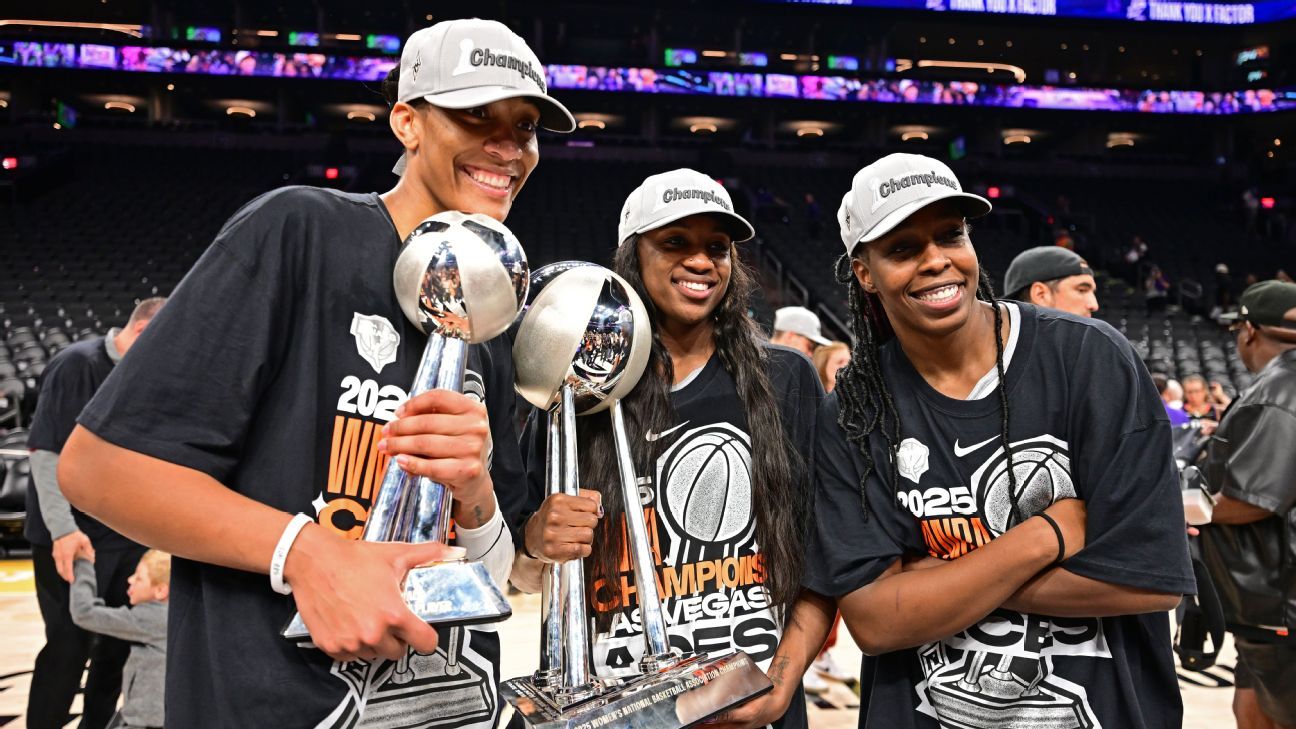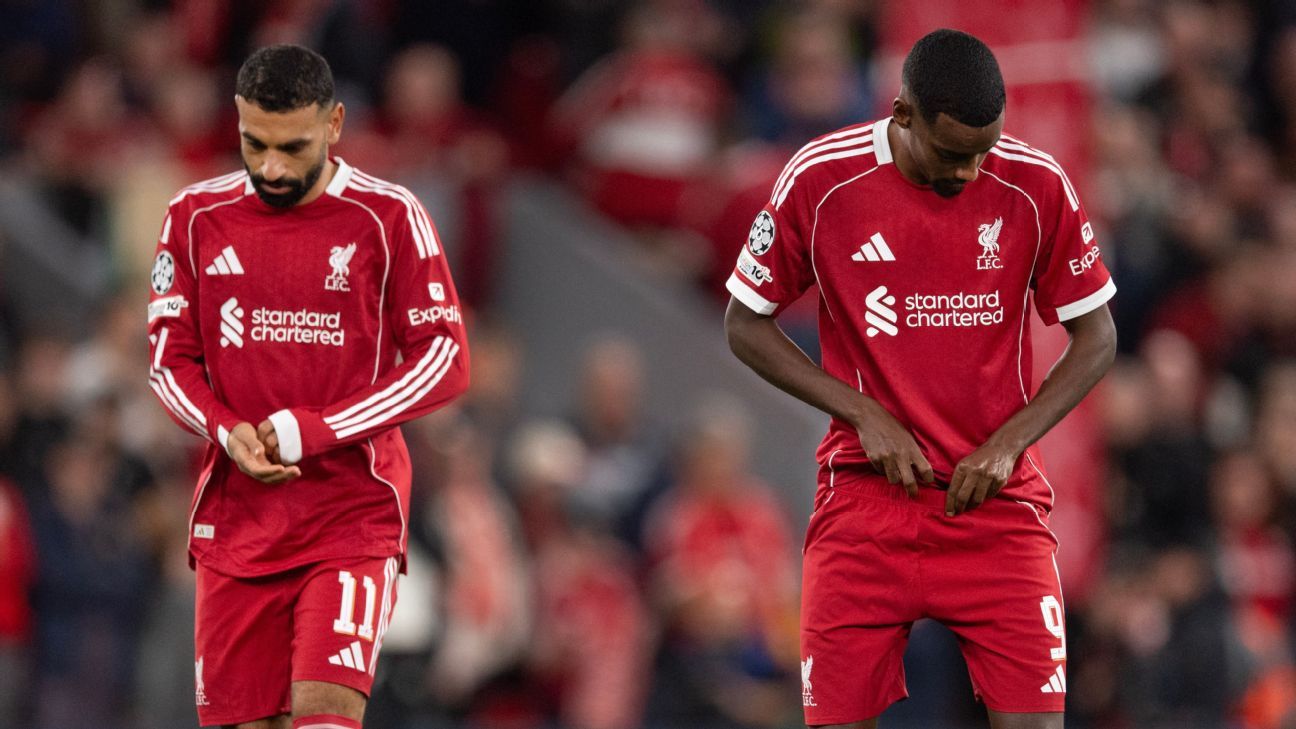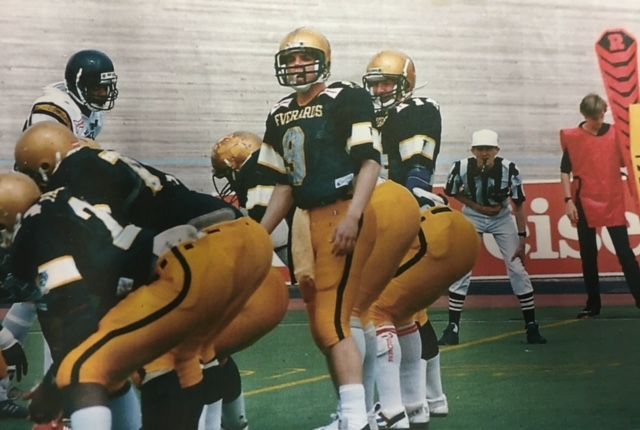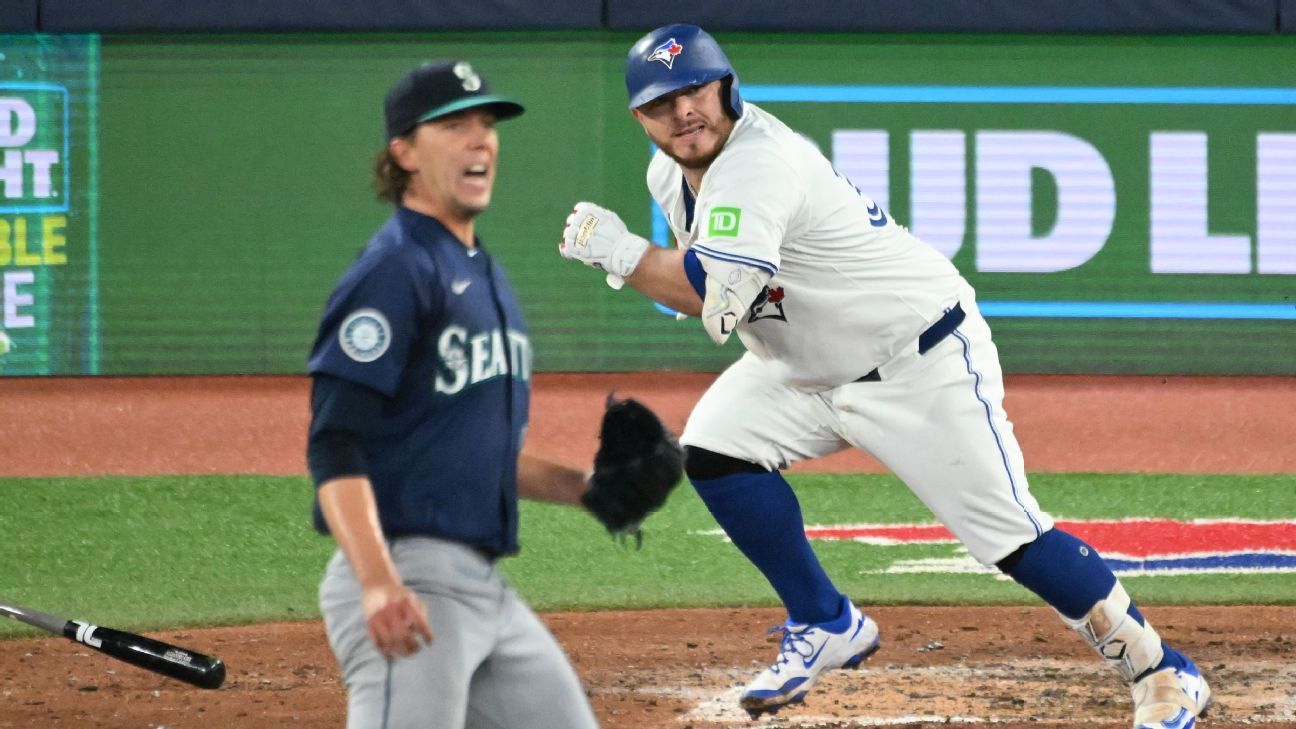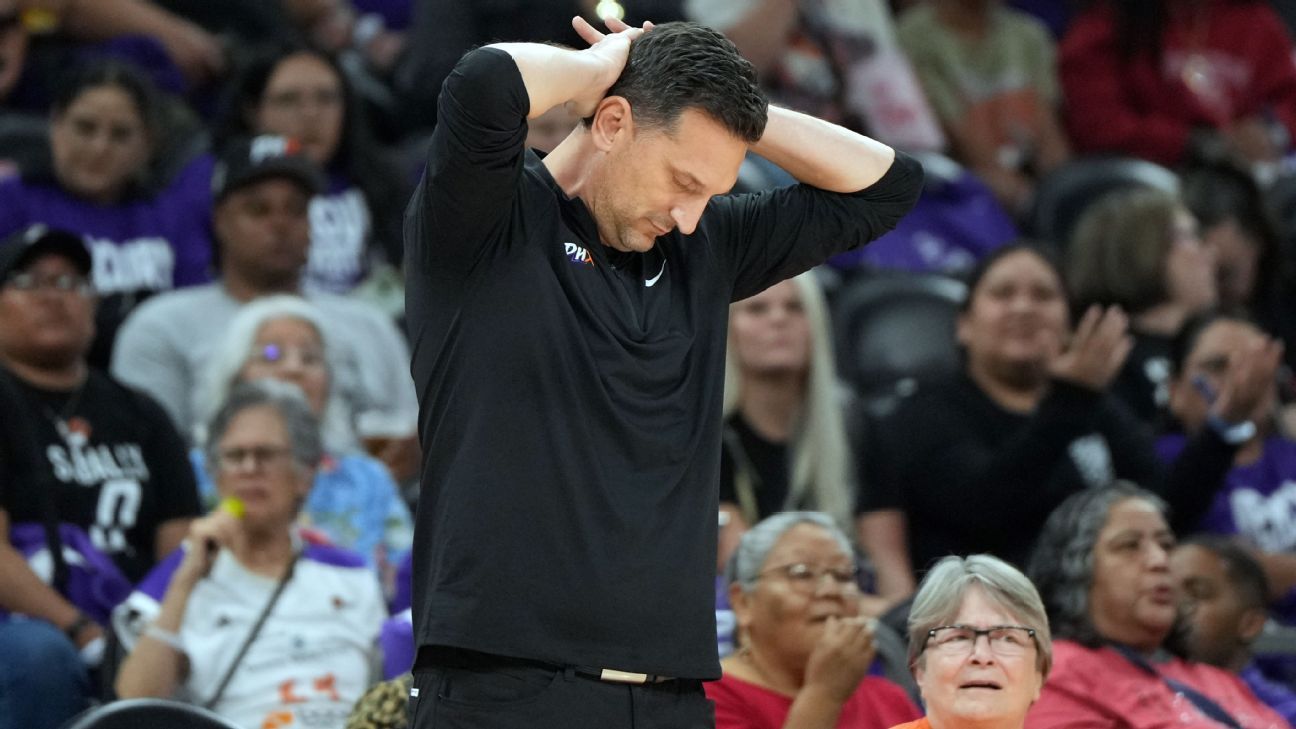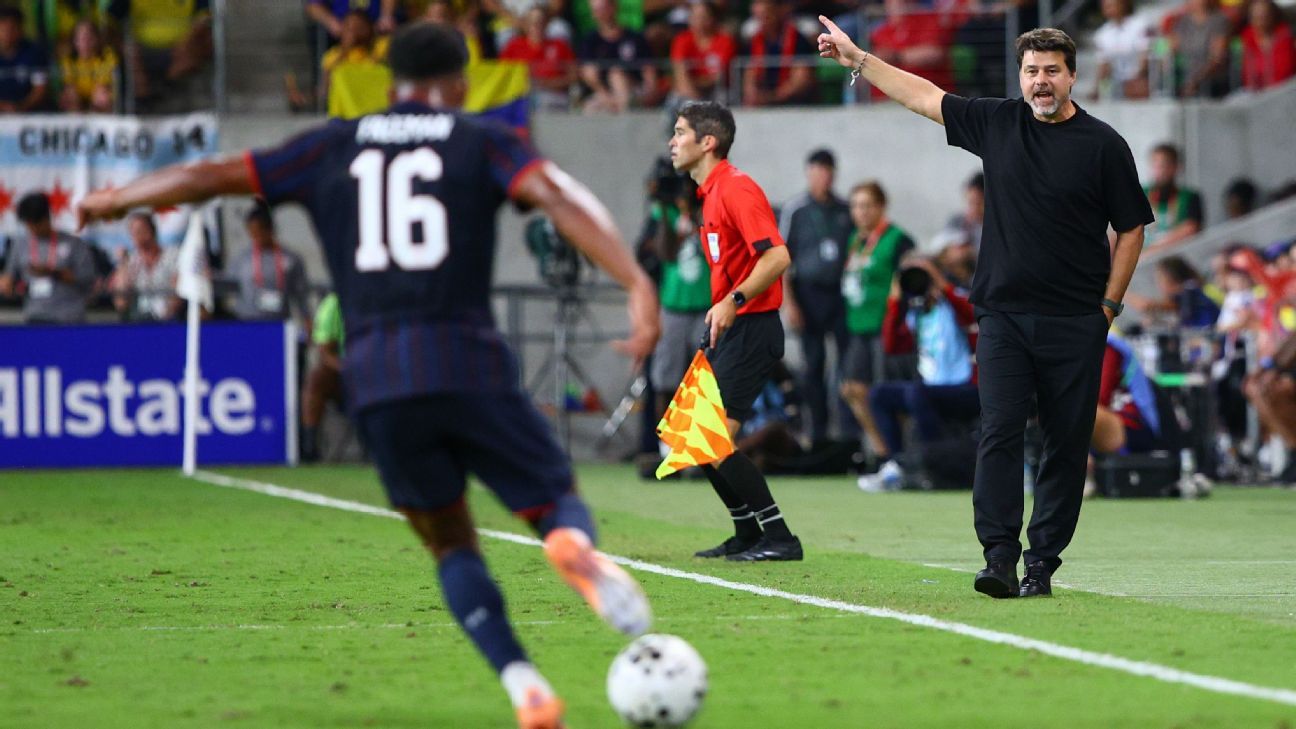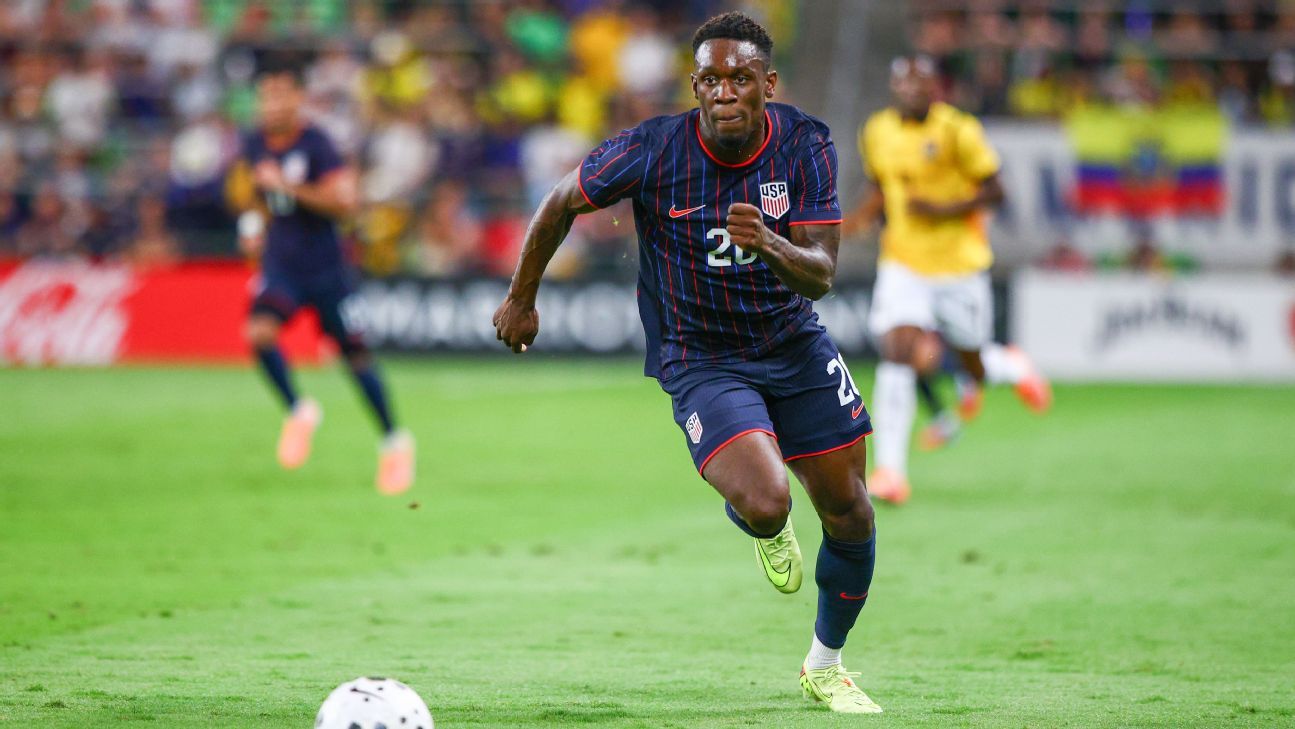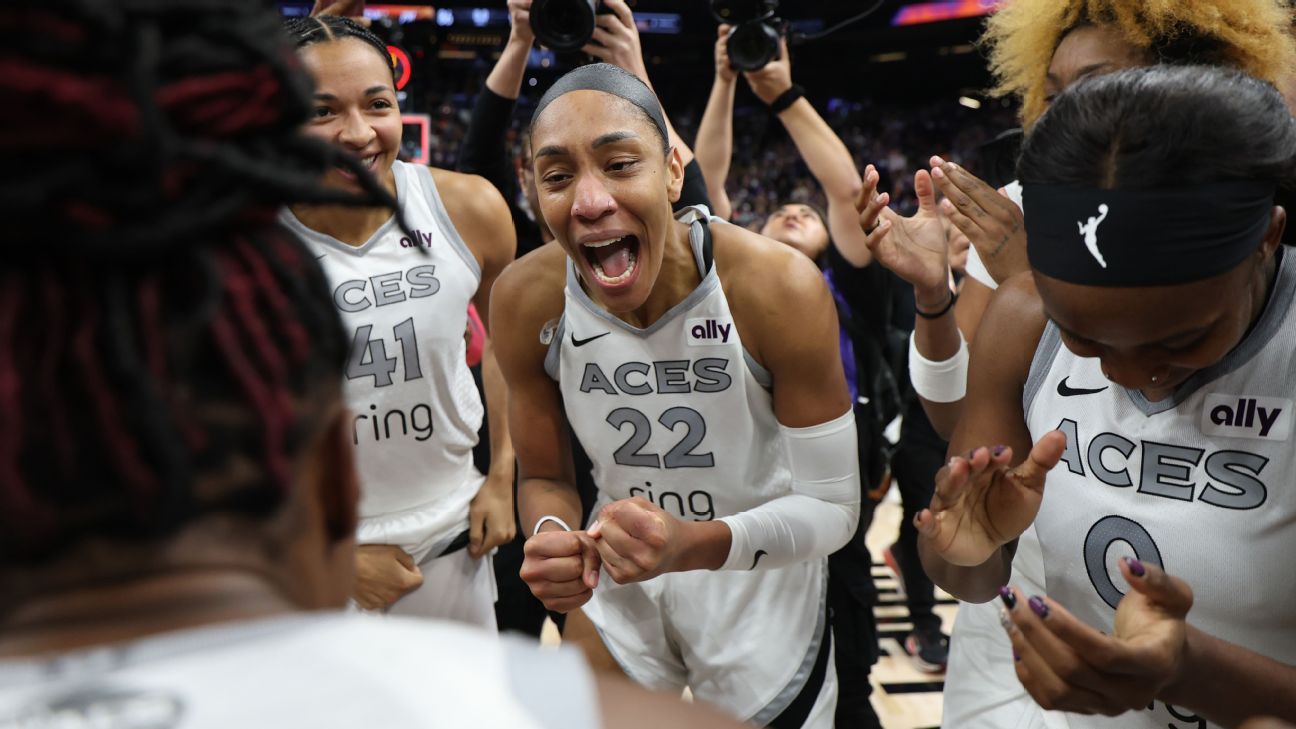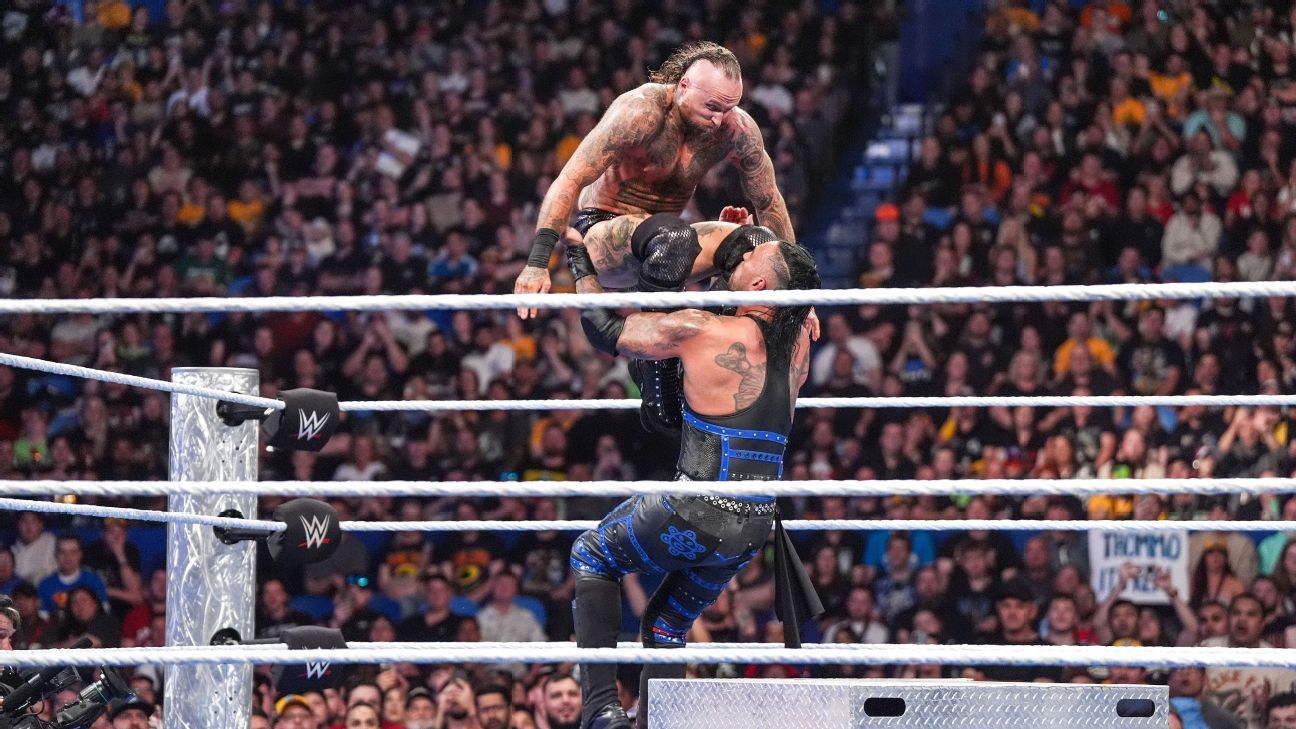
Jeff CarlisleOct 11, 2025, 04:28 AM ET
- Jeff Carlisle covers MLS and the U.S. national team for ESPN FC.
AUSTIN, Texas -- At first glance, the term "tale of two halves" doesn't seem appropriate to describe Friday's 1-1 draw between the U.S. men's national team (USMNT) and Ecuador. The U.S. had a sizable possession advantage throughout, created good chances, and dominated La Tri for long stretches. But looking from a different angle, it is applicable.
In the first half, even as the U.S. controlled the tempo (64.4% vs. 35.6% possession), it was Ecuador that controlled a key area. They made more of the little plays that mattered. That ability is in line with their recent history. They are a side that have ridden defensive solidity, excellent goalkeeping when needed, and an opportunistic attack to finish second in World Cup qualifying behind reigning champions Argentina. Along the way, La Tri conceded a miniscule five goals in 18 matches. While 14 goals scored isn't exactly prolific, it proved to be enough to qualify for their sixth-straight World Cup.
In this match, for a half at any rate, Ecuador checked every one of those boxes. The defense was adept at constricting space, deflecting passes, and forcing the U.S. into blind alleys. On the rare occasions when the U.S. broke through, goalkeeper Hernán Galíndez was there to deliver a pair of outstanding saves, including a deflection off the post from a Chris Richards shot in the 26th minute.
In attack, Ecuador punished the U.S. with a transition goal in the 24th minute. U.S. midfielder Aidan Morris came up empty when he tried to jump on a transition pass to Jordy Alcivar, and Ecuador midfielder's subsequent feed to Enner Valencia allowed the Pachuca striker to get into a one-vs.-one situation against Richards, which he made the most of to fire home a shot just inside Matt Freese's far post.
That play, full of little victories that turned into a critical sequence, defined the first half.
- Hernandez: Balogun's clinical finish earns USMNT a draw in 9/10 showing
- USMNT's 'brave' second half sealed Ecuador draw, Pochettino says
- Carlisle, Connelly: Predicting the USMNT's 2026 World Cup strikers
In the second half, the U.S. reversed the trend. It defended with more composure, upped the tempo in attack and scored a goal off the press in a play that featured Tim Weah, Tanner Tessmann and Malik Tillman, and ended with Folarin Balogun scoring off Tillman's centering feed. The U.S. did what it could to find a winner, but couldn't break through again.
That said, it was a performance that reflected well on the USMNT, even if the scoreline wasn't entirely satisfying. It showed plenty of dynamism in attack, with Tillman and Weston McKennie using plenty of clever touches to find Balogun in the kind of spaces behind a defense in which he thrives. Defensively, it looked solid in a formation that echoed the approach in the Gold Cup, where it played with a fluid back line that often defended with four players, but allowed left back Max Arfsten to be tilted higher up the field.
But among the more encouraging aspects of the match was the U.S.'s ability to win more of the little battles in the second half, and turn them into critical plays. Establishing that habit is a vital piece to achieving success in the 2026 World Cup next summer. In that kind of competition, the teams are so evenly matched, especially in the knockout rounds, that it is often little details that are the difference between advancing deep into the tournament and getting an early ticket home.
For much of this calendar year, at least in matches involving most of the first-choice squad, the U.S. wasn't making those little plays. Friday's match, as well as last month's encounter against Japan showed a side more able to come out on top in those sequences.
0:36
USMNT hosts Ecuador in friendly, draws 1-1
In case you missed it, the USMNT battled back for a 1-1 draw with Ecuador on Friday.
How the U.S. did that is open to interpretation, but suffice it to say, it's multifaceted. The U.S is at last playing with the kind of energy and desire that manager Mauricio Pochettino demands, as evidenced by the USMNT winning 53.4% of its duels, 73.3% of tackles and 65.0% of aerial challenges. That creates a platform for more effective attacking play. For Pochettino, that development is almost a relief.
"I'm so happy that we don't talk about other things like commitment, attitude or things that like this, that normally in the past we were," the U.S. manager said afterwards. "I think that is massive step up ... If we are better and we show that we are better than our opponent, we can win. If we don't show that, it's because it's a soccer problem."
He added: "We showed great mentality and that is in the way that we want to build to the World Cup."
But this is also a team that looks to be gaining some comfort with Pochettino's system. It certainly has taken some time -- far longer than expected when Pochettino took over the program 12 months ago -- but that long sought-after cohesion is now progressing, and the team's confidence is growing. The U.S. is playing more instinctually, rather than overthinking situations.
"If you're thinking of, 'Oh, I have to move here or I have to move here,' then all of a sudden you start to think more [rather] than just doing," U.S. defender Tim Ream said. "And now all of a sudden you see it; the ideas are taking hold and so now everyone's just doing and able to really just give everything at all times."
Combined with U.S. team's high level of fitness -- long a strong suit of the side -- and you have a team that can gain the upper hand and maintain that advantage as well. For Ream, that started to show in the second half, not so much in physically overpowering their opponents, but in slowly wearing them down. It creates a snowball effect where every challenge won feeds the team with more energy.
"We started to make more of the plays. We started to look the fresher team as the game wore on," he said. "And listen, as someone who has been on the other side of that, you know and you smell that. You're like, 'Okay, these guys are starting to flag, they're starting to be a little bit gassed,' and you actually feel more energized and it allows you to get on top of them more and start making more little plays, being connected better. I think we were connected pretty well in the first half, but I think even closer connections in the second half. I'll tell you what, it takes a toll on teams, and it did today."
That improvement, from tactics to mentality to fitness to execution, is even more impressive when you consider who was missing. Alejandro Zendejas, so inspiring against Japan, sat out the match with a knee injury that already has him on his way back to club side Club America; Antonee Robinson, whose return to the USMNT fold figured to give the side a huge boost, didn't make the gameday roster; Christian Pulisic was reduced to a 17-minute cameo off the bench; Tyler Adams - whose partner is about to have a baby -- and Sergiño Dest (injured) didn't even make the roster.
The U.S. is without a doubt a better team with those players. Pochettino has a challenge on his hands in determining who will make his World Cup roster and who will get on the field once that's decided. But, given where this team has been, and the progress it is making, it's the kind of puzzle he'll be more than happy to try to solve.
.png)
 5 hours ago
1
5 hours ago
1




